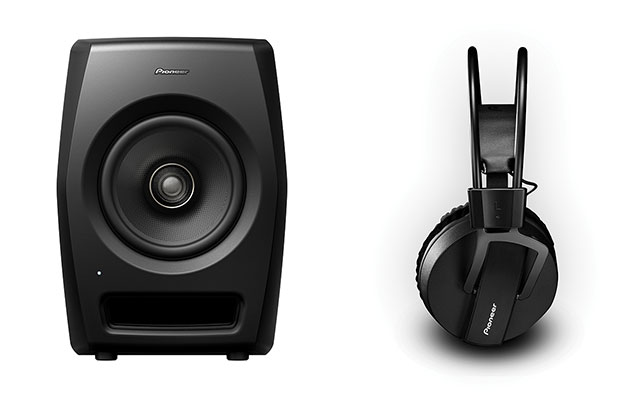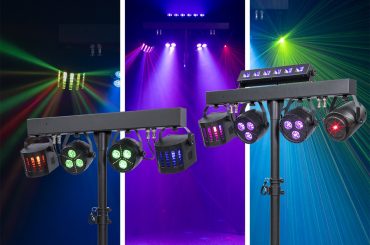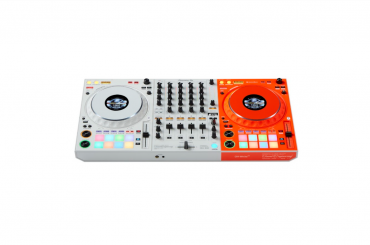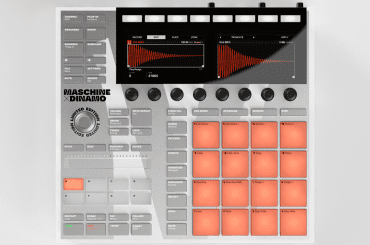As I write this review, it’s been about a year since the renowned private-equity firm KKR acquired a majority stake in what is now Pioneer DJ. (About 15-percent of Pioneer DJ is still owned by Japan’s Pioneer Corporation.)
Private equity firms can exert interesting pressures on a business to perform, and I’ve been curious to detect what these pressures might do to one of the industry’s most celebrated DJ brands. But judging from recent product introductions and the gear on display at this past January’s Winter NAMM Show in Anaheim, Calif., it would appear that if anything, Pioneer DJ is working hard to retain and expand its position.
One of the ways in which it’s doing that is by opening the new Pioneer Pro Audio division of Pioneer DJ. At NAMM, Pioneer DJ devoted the back side of its large booth footprint to the pro audio offerings, which included the GS-Wave and XY series loudspeakers for installed applications (clubs and live venues), as well as the XPRS loudspeaker series which may well be of interest to mobile jocks serving larger gigs.
But the focus of this review are a couple of new studio-focused offerings: the RM series studio monitors (in this review, the RM-07 model specifically, although the smaller RM-05 is also available), and the HRM-7 reference monitor headphones.
First Impressions: Unboxing this new Pioneer gear, one could say the experience was what one might expect from a premium brand. Starting with the RM-07 monitors, let’s just say they make a pretty remarkable first impression.
First and foremost, the RM-07 breaks the wooden mold. Rather than using the much-more-common MDF or particle-board cabinet, the RM-07’s housing is die-cast aluminum, adding considerable heft, while also providing the ability for the speaker’s shape to abandon the common basic box design. I’ll come back to the RM-07 momentarily.
Shifting to the HRM-7 headphones, one finds a rather sumptuous pair of cans packaged with a number of nice touches, including a spare set of ear cushions, two choices of cord (straight and curly), and the requisite adapter that allows them to be used with both common headphone jack sizes. With a fully over-the-ear design, soft cushions, light weight, and suspension headband system, they’re clearly designed for comfort over extended wear.
RM-07 Operation: Back to the RM-07 monitors… To say they’re sexy would probably not be totally off the mark. In addition to the unique shape and die-cast metal cabinet, the monitors are compact relative to the driver size. That’s largely thanks to the so-called coaxial driver design. Pioneer attributes the drivers to Pioneer sub-brand TAD Labs, but the central atypical design feature is that the main driver and tweeter are on the same axis—the tweeter is essentially in the center of the main driver cone. Pioneer says that a waveguide minimizes interference while the design itself provides a truer, more accurate sound.
The construction and shape of the cabinet is also stated to be more than for aesthetics alone. Pioneer says it’s designed to reduce external diffraction, theoretically providing, once again, truer reproduction. The company goes to great lengths to explain the design of what’s inside the cabinet, too, from the implementation of the front port, to the AFAST (Acoustic Filter Assisted System Tuning) acoustic tubes hiding inside the box.
On the back side, the RM-07 offers the usual array of connectivity and sound options. You can adjust the gain, as well as tri-band EQ for tailoring the monitors to the environment. Connectivity is limited to RCA and XLR—sufficient for any studio application to be sure. Pioneer also provides a switch to enable or disable the auto-standby functionality—a feature I appreciate, and leave enabled.
Lacking a laboratory full of technical gear to evaluate the claims, I’m left to making my assessment by ear using familiar material—at the end of the day, the same way virtually everyone evaluates speakers. I normally use a pair of monitors with 8-inch main drivers, which I’ve always considered the minimum size for serious use in the studio. But I’ve been pleasantly surprised by some monitors with smaller drivers, and the RM-07’s 6.5-inch mains delivers a level of power and purity that is indistinguishable from my usual monitors.
In any event, the clarity and color of the RM-07’s is superb, and they pack a distinct punch when you need it. With relatively flat frequency response across its range—roughly 40 Hz to 50 kHz—and integrated amps that deliver 150 watts of power, I found that they rendered a range of familiar material with tremendous accurately.
HRM-7 Operation: Shifting focus to the HRM-7 headphones, Pioneer has clearly invested a lot with the goal of producing a set of truly world-class monitoring headphones. As I mentioned earlier, they’re clearly designed for comfort over extended periods of serious studio work, with ear pads that are built from multilayered padding of memory foam and conventional foam encased in soft velour fabric. The suspension system consists of a flexible band with double structural components that float above the band, and to which the ear cups attach. The cups have movement on the vertical axis, with slight flex horizontally, which with the easy-flexing elastic in the band results in simple self-alignment to head size and shape with no effort, helping to reduce audio leakage.
On paper, the specs say that the HRM-7s provide amazing 5 Hz to 40 kHz response—outside the range of human hearing on both ends, essentially. There’s no question that the headphones sound quite good. But evaluating them against a wide range of known material, I’m not fully convinced that they are as flat as one might expect for a reference headphone. The upper midrange feels a bit more pronounced to me than I would have expected, and the low end slightly lacking in punch.
Pioneer doesn’t publish a frequency response graph for the HRM-7s as they do for the studio monitors, so the claimed flatness overall and roll-off points aren’t available. But truth be told, no monitoring system is completely flat across its range, so as with any headphones, I think it’s essential to listen for yourself with material you know in order to make a fair assessment.
Regardless, as I would have imagined by looking at their design, the HRM-7 headphones proved to be wildly comfortable even after a few hours of work in my studio—something very, very few headphones have achieved in my experience. Definitely a plus.
Conclusions: Pioneer Pro Audio’s new RM Series studio monitors and HRM-7 reference headphones prove that the venerable Pioneer DJ brand has no intention of sitting around on its laurels. The innovative and great-sounding RM-07 monitors have a price point that makes them an investment for many buyers (about $800 each, street price), but provide a solid solution for one of a studio’s most important component choices. And the HRM-7 reference headphones (about $200, street price) may well be a great choice for many producers who need to do their work comfortably without waking the neighbors. Together, they certainly appear to establish the Pioneer name as a serious player in the studio-gear space.








